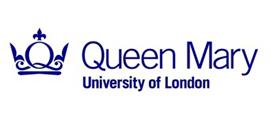- View more resources from this publisher
 Queen Mary University of London
Queen Mary University of London
The Magic of Computer Science II
The Magic of Computer Science II begins with an introduction to the resource, explaining the basic concepts used in the book. There follows descriptions of how to perform seven tricks with explanations of how the trick works and the computer science concepts illustrated in the tricks.
The joker in the pack: Uses algorithms, human-computer interaction and design to avoid human error.
Are you psychic?: The psychic powers of a member of the audience are tested. This trick uses algorithms, loops, variables and explores human-computer interaction, known as usability.
Mass hypnosis: Considers which things in a scene are salient and explains the disappearing robot.
The mind-boggling memory experiment: In which the order of half a pack of cards are memorised. This trick relies upon binary representation and explains the concepts of cognitive load, intrinsic load and extraneous load.
The numbers game: In which the number chosen will be found. Mental models are used in this trick.
The leading ace: In which all the aces join together in a single pile. Focus of attention is considered in the design of web pages.
The power of prophecy: In which the number of cards taken is known. The computer science explanation considers behaviour and model checkers
Show health and safety information
Please be aware that resources have been published on the website in the form that they were originally supplied. This means that procedures reflect general practice and standards applicable at the time resources were produced and cannot be assumed to be acceptable today. Website users are fully responsible for ensuring that any activity, including practical work, which they carry out is in accordance with current regulations related to health and safety and that an appropriate risk assessment has been carried out.
Downloads
-
The magic of computer science II 4.82 MB




